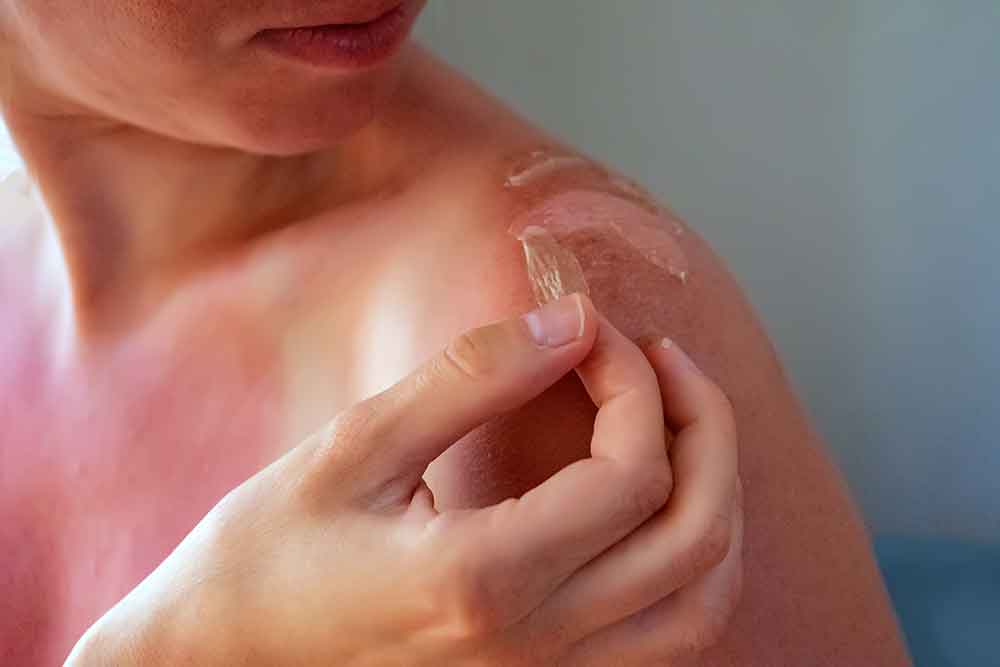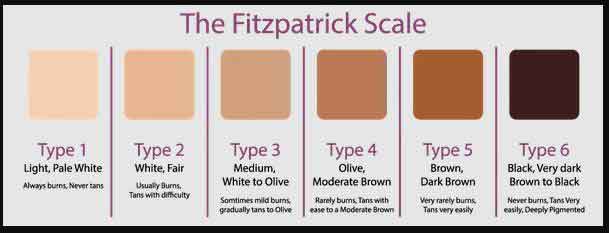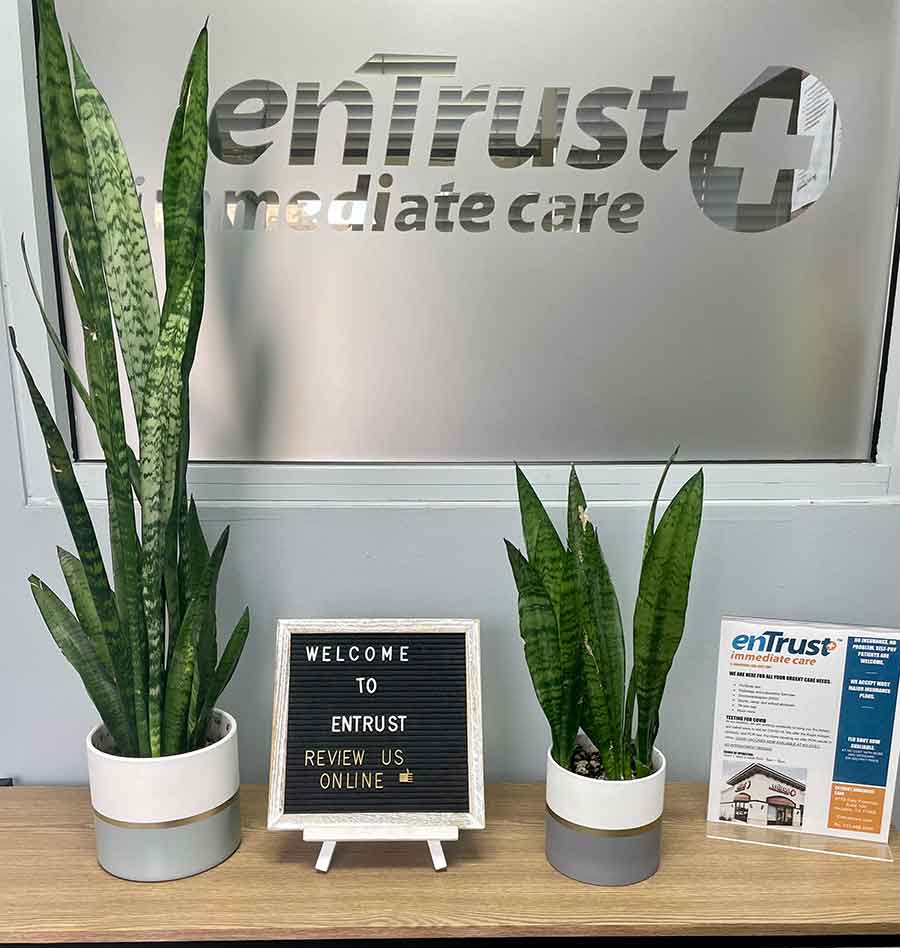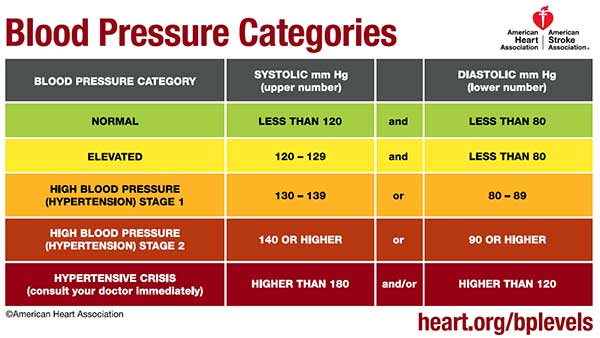
The History of Tanning
Tanning or spending excessive time in the sun has developed into a huge part of Western ideas of beauty and has been a popular American pastime for decades, but it wasn’t always like that. Throughout history, pale skin was linked to a higher social status that meant that a person didn’t have to endure the sun’s rays from working or living outside.
The societal shift began in 1923 when a fashion designer named Gabrielle “Coco” Chanel was photographed with a suntan after accidentally becoming sunburned on a vacation to the French Riviera. Because of her status in society, bronzed skin became the desired look from then on.
Another designer capitalized on the new tanning fad and launched the first suntan oil in 1927. The first modern indoor tanning bed was introduced in the U.S. in 1978. While paler skin had once been the mark of privilege, tanned skin now signified that you had the time and money to leisurely darken your complexion.
Millions of people have been slathering on baby oil to attract maximum rays since.
Suntanning is certainly not a universally accepted value, however! In Asia, India, or the Middle East, there are plenty of people who are happy to embrace their natural skin tone and shield it from the sun with extra clothing and protection.
The Dangers of Tanning
When you spend time basking in the sun this summer, just remember that among those golden rays lies a hidden danger known as ultraviolet (UV) light.
The truth is that tanned skin is damaged skin. Any change in the color of your skin after time outside, whether sunburn or suntan, indicates damage from UV rays.
The statistics are frightening. Suffering one or more blistering sunburns during childhood can cause skin cancer and more than doubles your chances of developing potentially deadly melanoma later in life.
Recent research shows that one in five Americans will develop skin cancer by the age of 70. According to the American Cancer Society, about 96,480 new melanomas, the most serious kind of skin cancer, will be diagnosed this year in the U.S., and about 4.3 million people will be treated for basal cell and squamous cell skin cancers.
In addition to skin cancer, sun damage can cause cosmetic damage as well.
Research has repeatedly shown that up to 90 percent of sagging, wrinkling and dark spots are a result of how much sun exposure you’ve sustained. One study, in particular, found that UV exposure is responsible for 80 percent of visible facial aging signs.
What is Sunburn and What Causes It?
The sun releases both UVB and UVA rays. UVB rays are shorter and are responsible for the development of skin cancer. UVA rays are longer and penetrate deeper into the skin. These rays are responsible for the signs of aging.
Our skin contains melanin which can be thought of as the body’s natural sunscreen. The skin senses sun damage from UV light and the body sends melanin into surrounding cells in an effort to shield them from further harm.
People with darker skin have more melanin at their disposal, while those with pale skin are quicker to burn.
A sunburn is the skin’s response to UV damage, but it’s not only red skin that you should be wary of. Any change in the color of your skin is a sign of sun damage, even that golden tan you crave.
When your body senses damage to the skin, it launches a counterattack sending surpluses of blood to the area to help healing. This is what causes the skin sensitivity and pain of sunburn, or in worse cases, little pockets of skin form protective bubbles over the tissue and fill with liquid in a process we know as blistering.
Sunburn Myths Busted
Myth: I won’t get a sunburn on a cloudy day or in the shade.
Truth: Actually, not only can you still get a sunburn, but it might also be worse. The sun doesn’t need to be shining brightly to still be scorching. UV rays may also be partially blocked in a shady spot by tree leaves, but they frequently bounce off reflective surfaces and hit your skin. Fresh snow nearly doubles your UV exposure and can even burn your eyeballs!
Myth: If I have dark skin, I don’t need sunblock.
Truth: A naturally higher level of the pigment melanin does afford some protection from the sun, but it doesn’t mean that sun damage is not happening, especially over prolonged periods of time.
Myth: Clothing protects my skin from the sun.
Truth: Darker colors and tighter weaves offer protection, but you’re not completely safe by any means. UPF (ultraviolet protection factor) clothing and hats are specially designed to provide more photo protection and block UV radiation so look for those when you are planning your day in the sun.
Myth: Skin protection is a “tomorrow problem.”
Truth: Young people often lack the motivation (or just plain common sense) to protect their skin from sun damage. Yet the time for prevention is now. If you have young children, stay on top of daily sunscreen duty. Most adult skin cancers develop as a result of poor sun protection during earlier years of life.
Stages of Sunburn:
Dr. Daniel Atkinson at treated.com has proposed 4 stages of sunburn.
- Exposure: Unprotected skin can be damaged by the sun’s UV rays in as little as 15 minutes. How long it takes to develop a sunburn depends on a number of factors such as the time of day and how light one’s skin is.
- Burn (from 2 hours): Exposure to UV rays inflicts damage on skin cells, which sparks an inflammatory response in the body. This comes in the form of redness.
- Pain (from 6 hours): The next stage is pain and soreness in the affected areas.’ How severe this is and how long it lasts for depends on the extent of the burn.
- Peeling (from 2 days onwards): When the worst of the pain has subsided, peeling may occur; usually after a couple of days. This can last for up to a week, again depending on how bad the burn is or how large an area it covers.
How to Protect Yourself from Sunburn
 An Ounce of Prevention is Worth a Pound of Cure!
An Ounce of Prevention is Worth a Pound of Cure!
The sun’s rays are the strongest and most harmful during the middle of the day between 10am and 4pm. Prevention is easy and straightforward.
How can you be outdoors while staying protected?
- It’s best to plan those outside activities earlier in the morning or later in the day. Another option is to have an umbrella, a tent covering, or to tie that hammock to some shade under the tree. The best defense against sunburn is avoiding the sun or staying in the shade.
- Take cover! A hat can shade the face, scalp, and neck and protect the ears and neck. A t-shirt and long shorts or a beach cover-up are also good choices (since a long-sleeved shirt and long pants are not the most practical). Sunglasses also protect the eyes from the damage of UV rays.
- Check the UV Index Scale. This tool can predict how quickly your skin will burn if you don’t use proper protection. Every day, the National Weather Service measures ultraviolet levels, then converts their findings into a scale that indicates exposure risk.
- Determine your risk! A person’s natural skin color affects their reaction to exposure to the sun. In 1975, Harvard dermatologist Thomas B. Fitzpatrick devised the Fitzpatrick scale which described the common tanning behavior of various skin types, as follows:
This handy UV Index Guide by the EPA is useful as well.

The Low Down on Sunscreen
You’ve heard it all before, but it is true. All of the damaging effects of the sun can be greatly reduced by using sunscreen!! Sunscreen comes in lotions, sprays, wipes, or gels so you can choose the application that is easiest for you to use.
The American Academy of Dermatology recommends the following:
- Sun Protection Factor (SPF) of 30 or higher: This lets you know how well sunscreen protects you from burning.
- Broad spectrum: The product should protect you from both UVA and UVB rays.
- Water resistant: A label of “water-resistant” means you are protected for 40 minutes, while “very water-resistant” is good for 80 minutes.
- Apply sunscreen generously 30 minutes before going outdoors. Don’t forget the ears, nose, lips, and the tops of your feet!
- Reapply sunscreen at least every 2 hours throughout the day, especially after swimming or exercising even if it says “waterproof”.
- For small areas such as your nose or lips, consider also applying a sunblock (sunblock is a thick, white cream that contains zinc and titanium) that physically blocks almost all sunlight from your skin.
- Be generous! You probably need more than you think. Most adults need about 1 ounce (the amount that would fit in a shot glass) to adequately cover their bodies.
Does Makeup Protect Against Sunburn?
Short answer is NO. It does not.
Makeup is not enough to protect your skin — even if it has a high SPF. Unless you’re willing to wear an entire ounce of foundation atop your face, stick with a standalone sunscreen.
Things That Can Make Sunburn Worse
- Medications: Antibiotics like tetracyclines, sulfonamides, and fluoroquinolones can make sunburn worse. Other prescription drugs, over-the-counter pain relievers, herbal remedies such as St. John’s Wort, perfumes, anti-aging skincare products with retinol creams can increase sensitivity to the sun. Check with your pharmacist or do your homework to figure out if your medication can make your sunburn worse.
- Higher altitudes can make sunburn worse because you are closer to the sun! So, if you go hiking in the mountains in the summer, use extra protection.
- Being nearer to the equator means more direct UV ray exposure so if you are going on that Caribbean vacation in the winter, use extra protection.
Symptoms of Sunburn
- Painful skin that is tender and feels warm or hot to the touch
- Changes in skin tone, such as pinkness or redness
- Swelling
- Small fluid-filled blisters, which may break
- Headache, fever, nausea, and fatigue if the sunburn is severe
- Eyes that feel painful or gritty
Just like there are types of breaks or fractures in bones, there are types, or degrees, of burns. While the short term, supposed “symptoms” of first- and second-degree burns differ, the lasting effects of the two, and, in fact, any burn, are identical.
Classifications of Sunburn
Burns are classified according to the amount of tissue they affect and how deep they are.
First-Degree Burns – A first-degree burn is considered the least serious type of burn because it injures only the top layers of skin, called the epidermis.
Skin with a first-degree burn is red, sore, and sensitive to the touch. It may also be moist, slightly swollen, or itchy. When lightly pressed, the reddened skin whitens, which is called blanching.
First-degree sunburns do not usually blister or leave a scar.
Second-Degree Burns – Second-degree burns are more severe than those of a first degree, tricking people into thinking it does more damage. Also called partial-thickness burns, these are identified by the depth of the skin’s layers.
This type of sunburn can swell and blister, which may indicate damage to deep skin layers and nerve endings. Second-degree burns may also radiate heat from the skin’s surface and produce fluids from the blisters. In severe cases, an individual with a second-degree sunburn may experience fever, vomiting, dehydration and secondary infection, which often lead to hospitalization.
If your skin begins peeling after a sunburn, it’s because your body is attempting to get rid of damaged cells that could become cancerous. When the body registers severe damage, all those cells are sacrificed. Your skin cells die off in mass to be replaced by new, healthy skin cells.

Sunburn Treatment
The majority of sunburns will heal on their own without any further treatment. However, you can take the following steps to treat your sunburn at home:
- Take over-the-counter pain medicine such as ibuprofen to decrease pain and swelling.
- Put a cool wet cloth, petroleum jelly, aloe, or moisturizing lotion (one with no perfume) on your sunburn.
- Some sunburn sprays and lotions contain a numbing medicine that takes the pain away for a little while. Doctors usually say you shouldn’t use these because many people develop an allergic reaction to the numbing medicine.
- If there are open blisters, you may want to use an antibiotic cream to prevent infection.
- Don’t pop your blisters. Allow the blisters to heal. Blistering skin means you have a second-degree sunburn. You should not pop the blisters, as blisters form to help your skin heal and protect you from infection.
- Keep your sunburned skin out of the sunlight for several weeks, especially if it’s peeling. The new skin underneath is very thin and sensitive.
- Take frequent cool baths or showers to help relieve the pain. As soon as you get out of the bathtub or shower, gently pat yourself dry, but leave a little water on your skin. Be careful! Water that’s too hot can strip the natural oils of the skin—not to mention adding to your pain.
- Use a moisturizer that contains aloe vera or to help soothe sunburned skin. If a particular area feels especially uncomfortable, you may want to apply a hydrocortisone cream that you can buy without a prescription. Do not treat sunburn with “-caine” products (such as benzocaine), as these may irritate the skin or cause an allergic reaction.
- Drink extra water. A sunburn draws fluid to the skin’s surface and away from the rest of the body. Drinking extra water helps prevent dehydration.
Does Milk Help Heal Sunburn?
There are many claims that milk can heal a sunburn.
In theory, this sounds good. It has Vitamin D and Vitamin A which are antioxidants. It also contains lactic acid which is a gentle exfoliant.
Unfortunately, there are no clinical studies to back up using milk as a treatment for sunburn or to prove its healing properties, but as long as you don’t have dairy sensitivity, there’s little harm in giving it a try. The cool milk compress will even help pull heat away from the skin.
Sunburn Urgent Care Treatment
When do I need medical care at an urgent care center like enTrust Immediate Care, and how will it be treated? Seek emergency medical treatment for sunburn if –
- The burn is accompanied by blisters and covers a large portion of your body (over 20%). Your doctor can assess your burns and order medication for inflammation and a medicated cream to assist with recovery and prevent infection.
- Your skin shows signs of infection, such as fever, pain, pus, or red streaks leading away from an open blister. Peeling sunburned skin or blisters that have opened can expose the new skin underneath to germs. An infection would require antibiotics.
- The burn is accompanied by a high fever, chills, or nausea. These could be signs of sun poisoning and require IV fluids to treat dehydration and further emergency care.
- Occasionally, a sunburn is severe enough to warrant admission to the hospital emergency room, especially when there is severe facial swelling, severe burns, nausea and vomiting, headache, confusion, faintness, severe dehydration, or infection that has gotten into the bloodstream.
Fear of sunburn doesn’t need to keep you out of the sun completely. Some simple measures of prevention can decrease your risk of skin cancer and as an added benefit, it can keep you looking younger than your years! And who doesn’t want to slow down the clock of aging?
—————————————————————————-
 Dr. Kanti Bansal, MD is a founding member of enTrust Immediate Care and an Emergency Medicine Physician in Houston, TX. He has over 20 years of experience in the emergency medical field. Before becoming an attending physician, he served as Chief Resident of his emergency medicine residency at Metropolitan Hospital Center in Manhattan, New York. He holds a Bachelor of Science degree in Biology and a minor in Computer Science from Brandeis University in Massachusetts. Dr. Bansal worked as an emergency room physician for several years at many hospitals in the Greater Houston Metro area, including Memorial Hermann Southwest, Memorial Hermann Southeast, Memorial Hermann Memorial City, St. Catherine’s Hospital in Katy, Texas, as well as St. Mary’s Hospital in Beaumont, Texas.
Dr. Kanti Bansal, MD is a founding member of enTrust Immediate Care and an Emergency Medicine Physician in Houston, TX. He has over 20 years of experience in the emergency medical field. Before becoming an attending physician, he served as Chief Resident of his emergency medicine residency at Metropolitan Hospital Center in Manhattan, New York. He holds a Bachelor of Science degree in Biology and a minor in Computer Science from Brandeis University in Massachusetts. Dr. Bansal worked as an emergency room physician for several years at many hospitals in the Greater Houston Metro area, including Memorial Hermann Southwest, Memorial Hermann Southeast, Memorial Hermann Memorial City, St. Catherine’s Hospital in Katy, Texas, as well as St. Mary’s Hospital in Beaumont, Texas.








